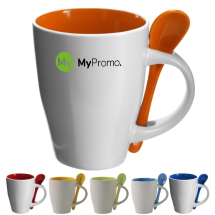Ceramic earthenware
What is Ceramic Earthenware?
Ceramic earthenware is one of the oldest materials used for crafting various objects, essential in both historical and modern contexts. In the realms of manufacturing and promotional gifts, the significance of ceramic earthenware cannot be overstated. It combines practicality with aesthetic appeal, making it a preferred choice for a wide range of products.
Ceramic earthenware refers to pottery that has been crafted from clay and baked at relatively low temperatures. This process results in a porous and opaque body, which is then often glazed to enhance durability and visual attractiveness. The history of ceramic earthenware stretches back thousands of years, with early humans discovering the functionality of clay as a medium for making water containers, cooking pots, and decorative items.
The basic production process of ceramic earthenware involves several key steps. Initially, the clay is mined and refined to remove impurities. It is then shaped into the desired form through techniques such as hand-modelling, casting, or wheel-throwing. After shaping, the earthenware is left to dry to remove moisture. The next phase is bisque firing, where the items are heated at a low temperature to harden them. The final step often involves glazing and re-firing to achieve a sturdy, attractive finish.
Key Properties and Characteristics
Ceramic earthenware is lauded for its good insulating properties, making it ideal for items like pottery and crockery that need to manage heat effectively. It's also highly workable, allowing for intricate designs and detailed customisation—a trait highly prized for promotional items. However, it is more brittle and less durable than materials like porcelain or bone china, and it is susceptible to chipping and cracking if not handled carefully.
Common Applications and Notable Examples
Ceramic earthenware's versatility makes it suitable for an extensive range of products. In everyday life, it appears as dishes, vases, and decorative tiles. Its aesthetic qualities, coupled with the ease of adding personalised touches, make it popular for promotional gifts such as personalised mugs, personalised plates, and ornamental figurines.
Advantages in Manufacturing
Using ceramic earthenware in manufacturing offers several benefits. Its lower firing temperature reduces energy consumption compared to materials that require higher temperatures, thus cutting down on production costs. Additionally, its porous nature allows for effective glazing, enabling manufacturers to produce a variety of colour and design options that can be tailored to specific promotional needs.
Comparison with Other Materials
When compared to other materials like metals or plastics, ceramic earthenware offers a unique blend of aesthetic appeal and functional utility. Unlike plastics, it is non-toxic and has a lower impact on the environment. Compared to metals, it provides better insulation and can be crafted with more detailed and colourful designs. However, its fragility is a limitation, particularly in contexts where durability and long-term use are critical.
Challenges and Limitations
The main challenges in working with ceramic earthenware include its susceptibility to impact damage and its limitations in structural applications due to its brittleness. Additionally, quality control during the firing process is crucial, as uneven temperatures can lead to defects and weakened products.
In conclusion, ceramic earthenware remains a favoured material in both traditional crafts and modern manufacturing, offering a unique combination of beauty, customisability, and practical application. Its role in producing both everyday items and specialised promotional gifts continues to evolve, reflecting both its historical roots and modern advancements.
What is ceramic earthenware?
Ceramic earthenware refers to pottery made from clay that is fired at relatively low temperatures, resulting in a porous, opaque finish. It is often glazed to enhance its durability and aesthetic appeal.
How is ceramic earthenware made?
The production process typically involves several steps: extraction and purification of clay, shaping the clay into the desired form through techniques such as hand-modelling, casting, or wheel-throwing, drying to remove moisture, bisque firing to harden the pottery, and finally glazing and firing again to achieve a durable and attractive finish.
What distinguishes ceramic earthenware from other types of ceramics?
Ceramic earthenware is fired at lower temperatures than stoneware and porcelain, resulting in a softer and more porous material. Unlike porcelain, which is translucent and vitrified, earthenware remains opaque and does not become glass-like.
Can ceramic earthenware be used for cooking?
Yes, ceramic earthenware is suitable for cooking as long as it is glazed and treated properly to withstand high temperatures. However, it should not be subjected to sudden temperature changes, as this can cause cracking.
Is ceramic earthenware dishwasher safe?
While many modern ceramic earthenware products are designed to be dishwasher safe, it is essential to check with the manufacturer. Traditional or hand-painted earthenware might require hand washing to preserve the finish.

